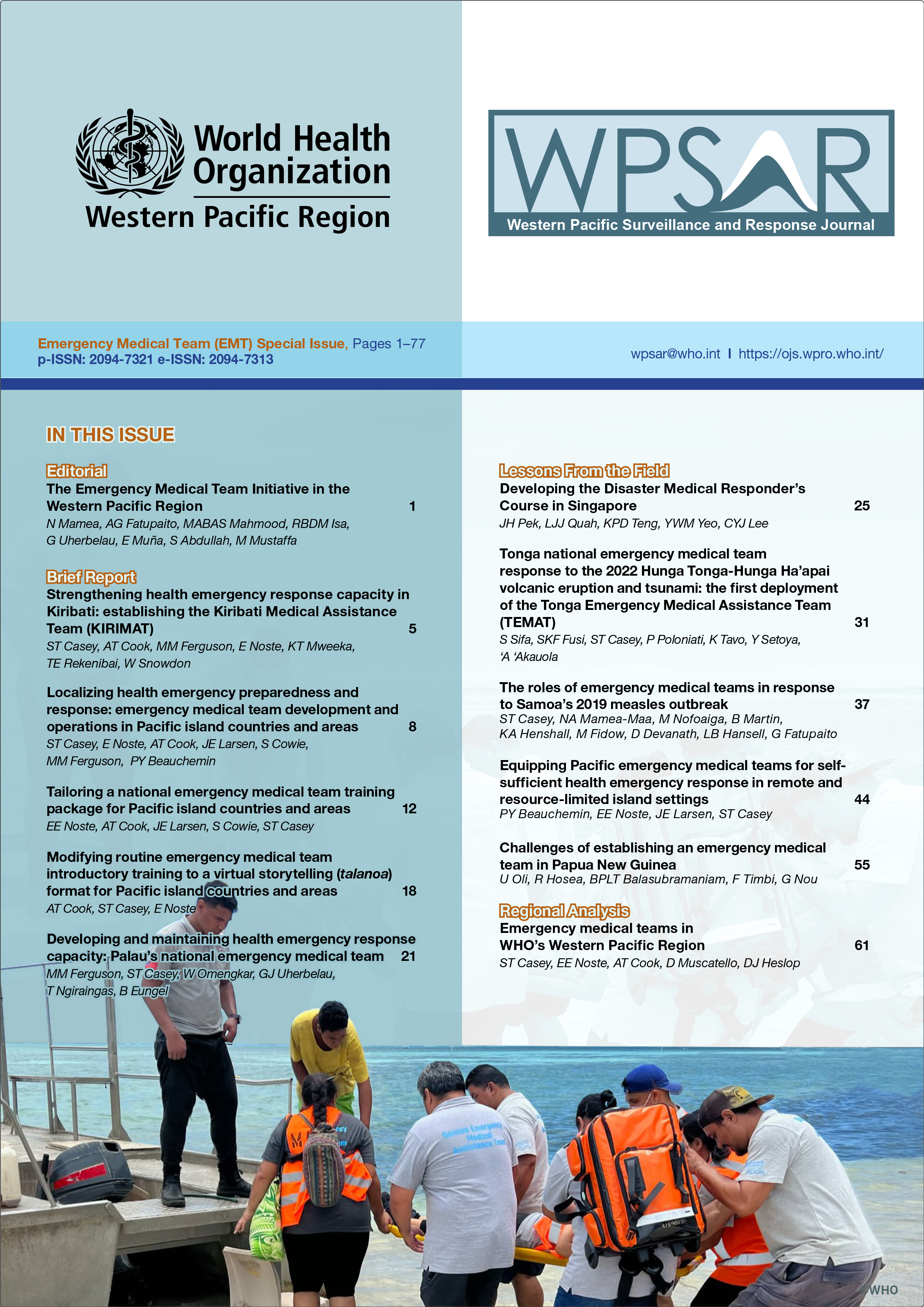Emergency medical teams in WHO’s Western Pacific Region
DOI:
https://doi.org/10.5365/wpsar.2023.14.6.1184Keywords:
emergency medical team, disasters, surge capacityAbstract
This regional analysis aims to provide a comprehensive review of emergency medical team development and action in health emergency response in the Western Pacific Region from 2010 to 2024. It details national, subregional and regional efforts to strengthen health emergency preparedness, response and resilience; it notes challenges faced by the teams in these efforts; and it provides examples that could be adopted or adapted to strengthen their development and action around the world. Emergency medical teams are critical components of national, regional and global health emergency workforces, enabling rapid, high-quality and self-sufficient responses to health emergencies domestically or internationally. They comprise clinical, mental health, public health, logistics and water/sanitation/hygiene personnel who collaborate in providing critical services to affected populations during health emergencies. By the end of 2024, emergency medical teams had been established in nearly every country in the Western Pacific Region, with 16 classified for international deployments, and many national teams developed to strengthen response to domestic emergencies. This analysis is based on published peer-reviewed literature on emergency medical team development and action in health emergencies in the Western Pacific Region, as well as publicly available data on team collaboration and deployment for health emergency response. This analysis considers the global evolution of the World Health Organization Emergency Medical Team Initiative and describes its development in the Western Pacific Region, including how the teams have contributed to emergency response efforts, and the key enabling factors and challenges faced as they develop and respond to emergencies. The analysis concludes by highlighting opportunities for future development, collaboration, research and insights that may be applicable to the global development of emergency medical teams.

